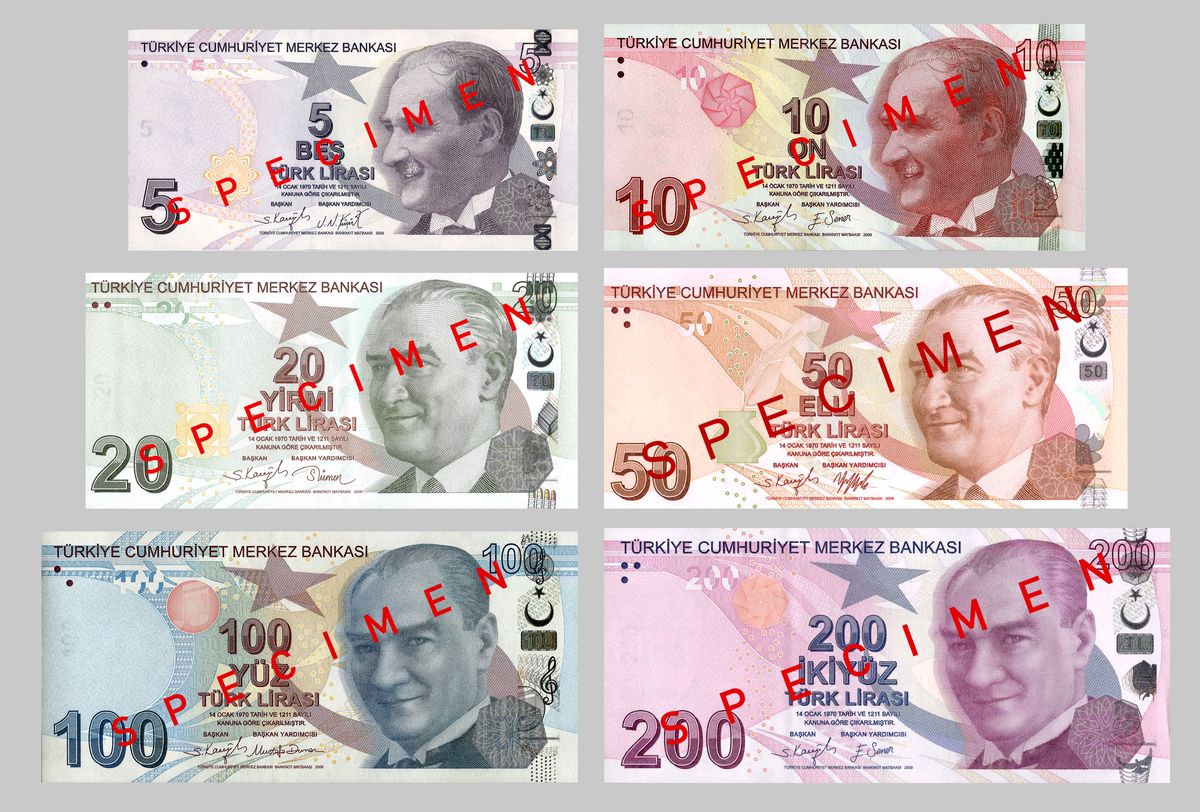Turkish New Lira TRY What it is How it Works

Contents
- 1 Turkish New Lira (TRY): What it is, How it Works
- 1.1 What Is the Turkish New Lira (TRY)?
- 1.2 Understanding the Turkish New Lira (TRY)
- 1.3 Modern History of Turkish Lira
- 1.4 Can I Use Euros or Dollars in Turkey, or Do I Need to Exchange Them for Lira?
- 1.5 What Are the Denominations of Turkish New Lira Banknotes and Coins?
- 1.6 Are There Any Special Security Features on Turkish Lira Banknotes to Prevent Counterfeiting?
- 1.7 Are Credit Cards Widely Accepted in Turkey?
- 1.8 The Bottom Line
Turkish New Lira (TRY): What it is, How it Works
What Is the Turkish New Lira (TRY)?
TRY is the abbreviation for the official Turkish currency, the new lira. This currency is also used in the Turkish Republic of Northern Cyprus. The Turkish new lira breaks into 100 new kurus coins, and the lira will often have the symbol YTL shown.
As of June 2023, $1 USD is worth roughly 21.04 TRY.
Key Takeaways
- The Turkish New Lira (TRY) is the national currency of Turkey.
- Turkey has experienced high inflation rates compared to peer countries.
- The currency has been revalued several times to deal with inflation.
- As of June 2023, one U.S. Dollar was worth roughly 21 new lira.
Understanding the Turkish New Lira (TRY)
Introduced in early 2005, the Turkish new lira was equivalent to one million of the old Turkish lira. During revaluation in 2005, a new law removed the last six zeros from the value of the currency. The TRY printed its ninth issue in 2009.
The history of the release of the Turkish lira as a currency splits into two periods. The first Turkish lira is the period between 1923 and 2005. 2005 marks the start of the second Turkish lira period.
Throughout its history, the currency has been pegged to the French franc, British pound, and both hard and soft pegging to the U.S. dollar. There is no longer an explicit peg, but Turkey actively intervenes in the currency markets and attempts to influence the value of the TRY.
The TRY has, at times, ranked as one of the least valuable currencies in the world. After rampant inflation, it saw revaluation in 2005. As of June 2023, one Turkish new lira is worth approximately 5 cents in U.S. dollars. So a single U.S. dollar is worth about 21 liras.
Turkish banknotes and coins depict portraits of Mustafa Kemal Atatürk, the founding father of the modern Republic of Turkey.
Modern History of Turkish Lira
An economic crisis in 2001 led to the devaluation of Turkey’s lira, and economic reforms occurred in 2005. State-owned businesses, such as telecommunications companies and oil refineries, were privatized and the central bank ran a tight monetary policy to restrict spending and ensure inflation did not destroy economic gains.
On August 10, 2018, the Turkish lira plunged by more than 20% in a single day into record low territory against the U.S. dollar due to economic and geopolitical problems plaguing Turkey. Besides suffering from rapidly rising inflation and political pressure to keep interest rates low, the country faced a looming debt crisis that threatened the economy and currency.
Before economic reforms took place, Turkey’s economy relied heavily on foreign aid as about 55% of Turkey’s GDP was external debt. Moreover, Turkey’s external debt as a share of GDP grew to a record 60% in December 2020.
In May 2023, the Turkish lira sank to a new record low after Recep Tayyip Erdogan’s re-election. Detractors of Erdogan believe Turkey’s unorthodox monetary and economic policy frameworks will likely remain in place, hampering the economy. The Turkish economy is facing a potential crisis due to limited FX reserves and negative real interest rates; credit default swaps have also spiked.
Can I Use Euros or Dollars in Turkey, or Do I Need to Exchange Them for Lira?
While some businesses in popular tourist areas may accept euros or dollars, it’s generally recommended to exchange them for Turkish new lira. Most transactions in Turkey are conducted in lira, and using local currency will ensure smoother transactions and avoid any potential issues.
What Are the Denominations of Turkish New Lira Banknotes and Coins?
Turkish new lira banknotes are available in denominations of 5, 10, 20, 50, 100, and 200 lira. Coins are issued in values of 1, 5, 10, 25, and 50 kuruş, as well as 1 lira.
Are There Any Special Security Features on Turkish Lira Banknotes to Prevent Counterfeiting?
Turkish new lira banknotes incorporate various security features like holograms, watermarks, and raised prints to deter counterfeiting and ensure their authenticity.
Are Credit Cards Widely Accepted in Turkey?
Credit cards are widely accepted in most establishments in Turkey, especially in tourist areas and larger cities. It’s recommended to inform your bank or credit card company about your travel plans to avoid any potential issues with card usage.
The Bottom Line
The Turkish new lira (TRY) is the official currency of Turkey. While some businesses may accept euros or dollars in tourist areas, it is generally recommended to exchange foreign currency for Turkish lira. Currency exchange services are available at banks, exchange offices, and ATMs throughout Turkey.
The Turkish new lira (TRY) is the official currency of Turkey. While some businesses may accept euros or dollars in tourist areas, it is generally recommended to exchange foreign currency for Turkish lira. Currency exchange services are available at banks, exchange offices, and ATMs throughout Turkey.



